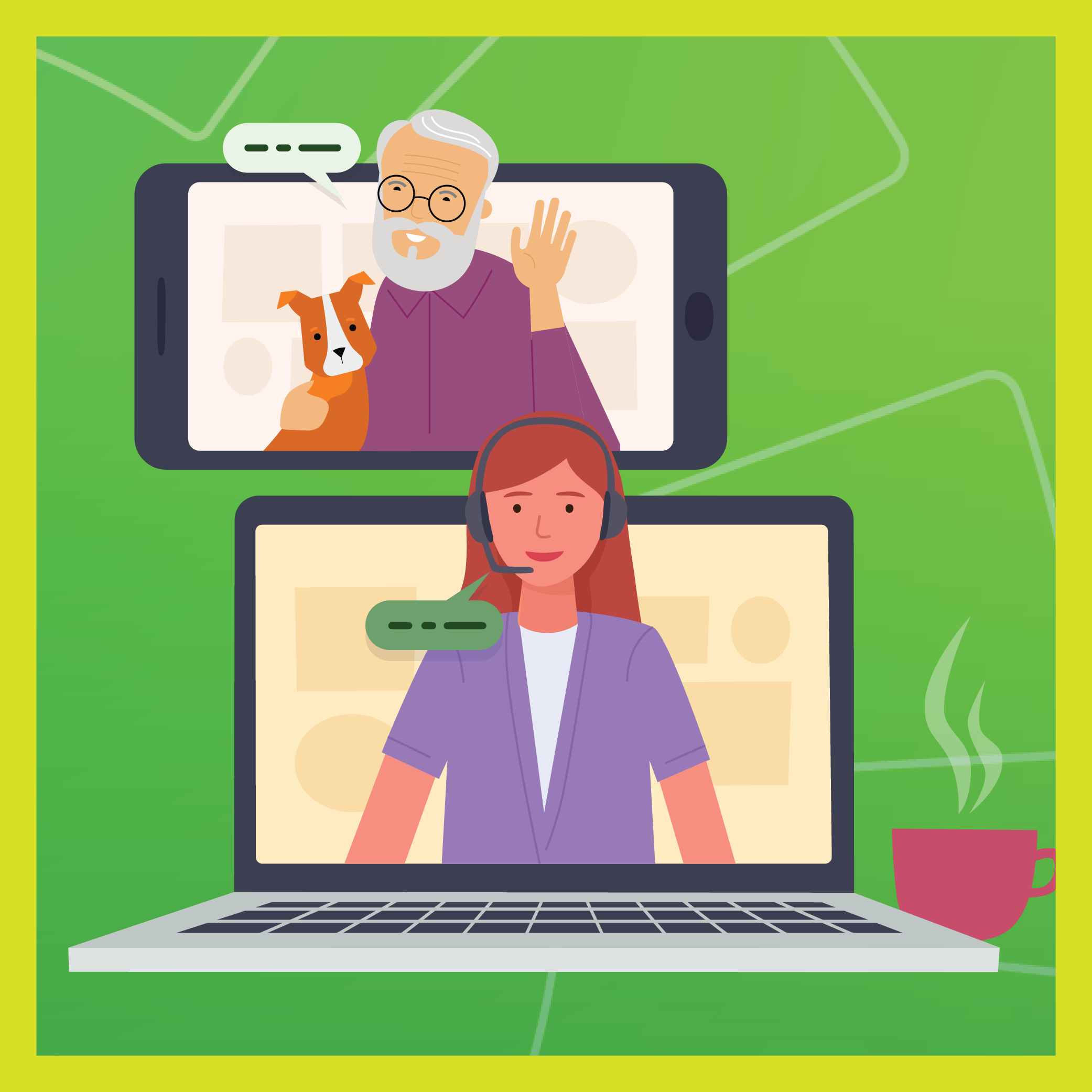
Telemedicine is on the rise in Vermont communities and is becoming the new normal as providers rapidly adapt to providing care for their patients during the COVID-19 pandemic. In a recent statewide survey conducted by OneCare Vermont, healthcare providers overwhelmingly responded that they are providing telemedicine services to patients during the public health emergency. 92% of respondents said they had utilized audio/video services in the past 60 days, and over 80% responded that they had provided audio-only services to patients.
OneCare Medical Director Dr. Susan Shane presented the findings of the survey at the Vermont Program for Quality in Health Care Telehealth Virtual Office Hours. “The COVID-19 pandemic has really pushed the use of telemedicine services to meet the needs of our patients sheltering at home. Providers and patients have both found these services essential, to be able to participate in visits from the safety of their homes and have their needs met,” said Dr. Shane.

The COVID-19 pandemic has really pushed the use of telemedicine services to meet the needs of our patients sheltering at home. Providers and patients have both found these services essential, to be able to participate in visits from the safety of their homes and have their needs met.
 Mental health conditions may worsen for some during the pandemic, with worries about the virus compounded by social isolation. Telehealth can provide essential help and support to individuals with anxiety, depression and other mental health conditions. A survey respondent stated, “One patient of mine who has been isolated to her apartment has had a profound worsening of her depression and markedly increased suicidality. Because of the efficiency of phone and video visits we have been able to have multiple staff provide multiple, briefer points of care to increase her perception of support and she has volunteered that this has saved her life.”
Mental health conditions may worsen for some during the pandemic, with worries about the virus compounded by social isolation. Telehealth can provide essential help and support to individuals with anxiety, depression and other mental health conditions. A survey respondent stated, “One patient of mine who has been isolated to her apartment has had a profound worsening of her depression and markedly increased suicidality. Because of the efficiency of phone and video visits we have been able to have multiple staff provide multiple, briefer points of care to increase her perception of support and she has volunteered that this has saved her life.”
In their survey responses, providers shared many benefits to telemedicine that continue beyond the pandemic, and said that telehealth is particularly suited to behavioral health visits, chronic disease management, and medication management. Dr. Shane explained the potential impact of telehealth services for a rural state with frequent winter storms. “Providers noted that with the use of telemedicine visits there was a reduction in their no-show rates and cancellations. This could be promising for the future if there are winter storms and bad roads and ensure patients would still have access to their providers.” she said.
One patient of mine who has been isolated to her apartment has had a profound worsening of her depression and markedly increased suicidality. Because of the efficiency of phone and video visits we have been able to have multiple staff provide multiple, briefer points of care to increase her perception of support and she has volunteered that this has saved her life.
Providers all around the state emphasized the need for improved broadband and cellular service to enable essential connectivity with their patients and the survey revealed a clear need for increased data literacy. 86% of respondents perceived that a lack of technical understanding, support or comfort was a barrier for their patient to access telemedicine. Resources are available to support patient access of telemedicine services, including Telehealth for Seniors, a nationwide volunteer group providing seniors and low-income communities with devices and instructions to connect them to their physicians via telehealth.
In addition to important health care services to patients, telehealth services provide healthcare organizations with much-needed revenue during the state of emergency. Stay-at-home orders and physical distancing meant many patients have been unable to visit doctors for in-person appointments, creating an increased need for telehealth services. When the pandemic began, many health insurance carriers chose to pay for telehealth visits at the same rate as in-person visits. These parity payments have proven popular among clinicians, including payment for telephone-only services for those without video capability. 82% of survey respondents said telephone-only services should continue to be reimbursed at or near parity post COVID-19.
For more information:
Please contact Public Affairs at OneCare Vermont. public@onecarevt.org | 802-847-1346
To stay up to date on OneCare, please visit our news blog and our social media channels on LinkedIn and Twitter.
